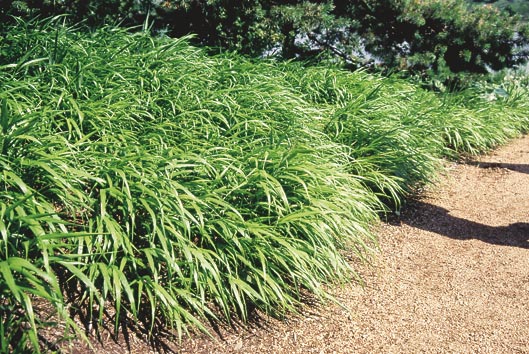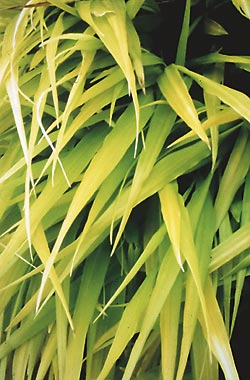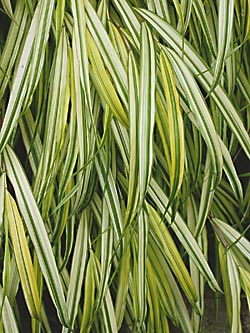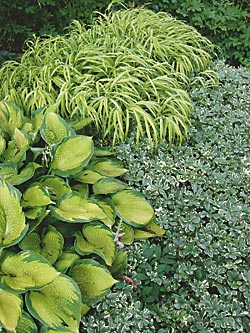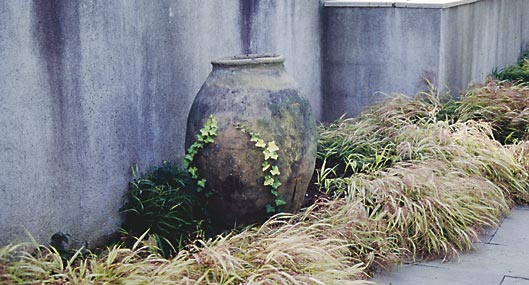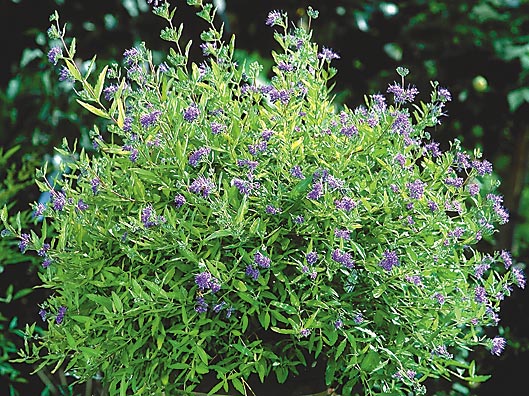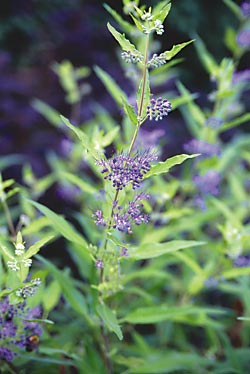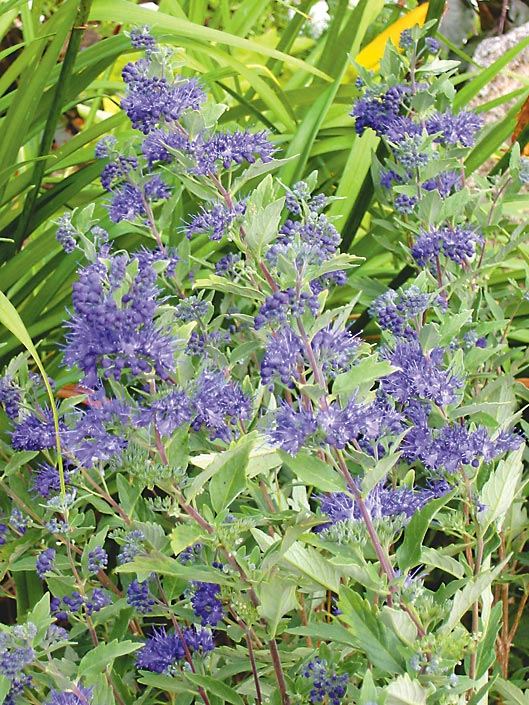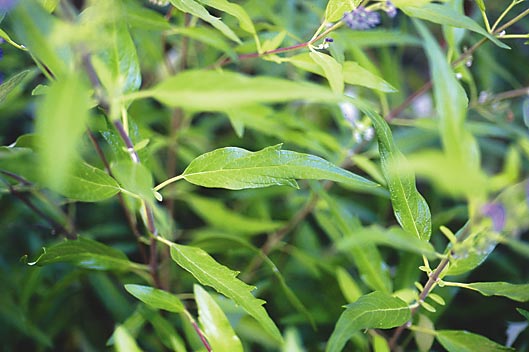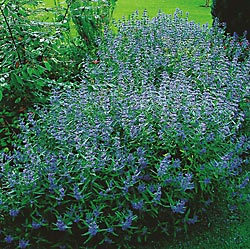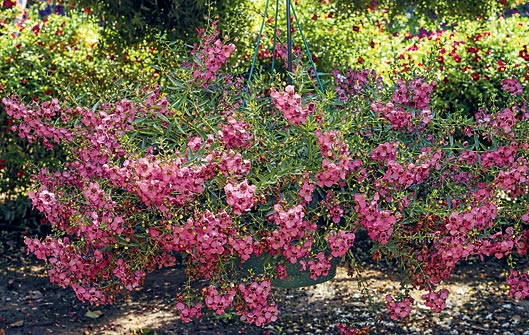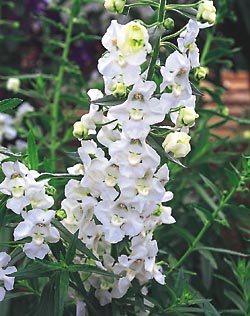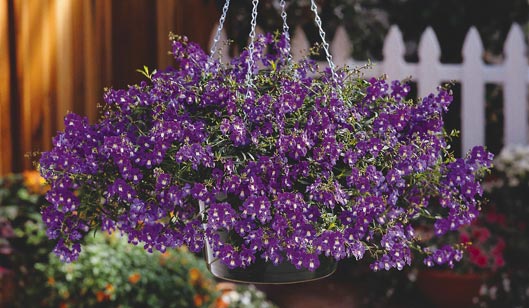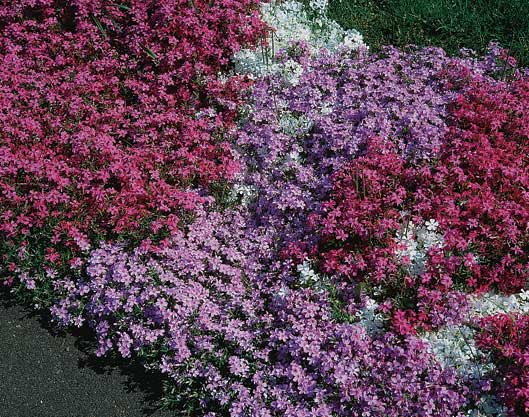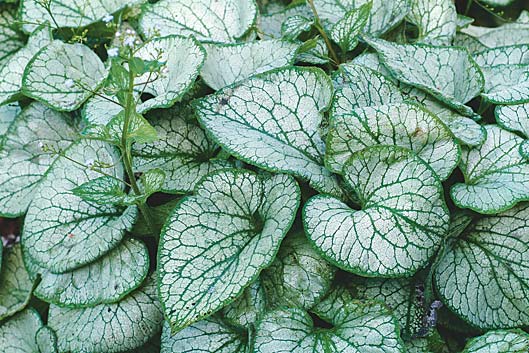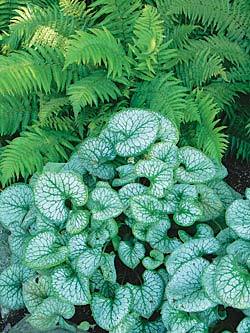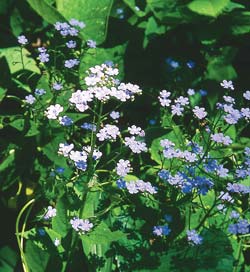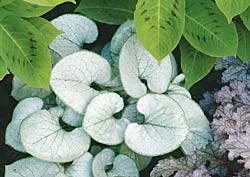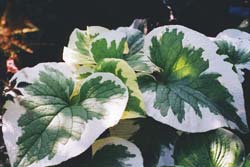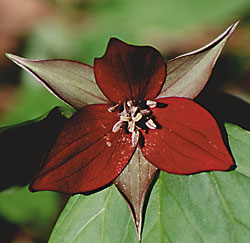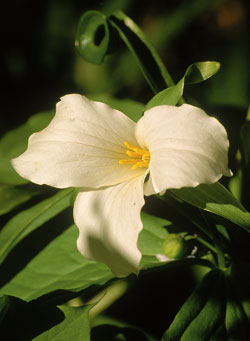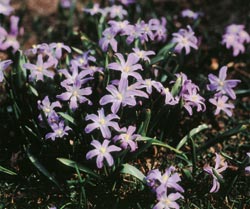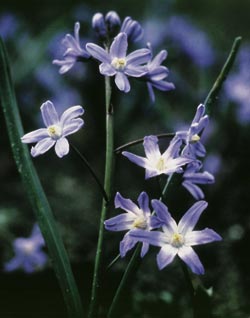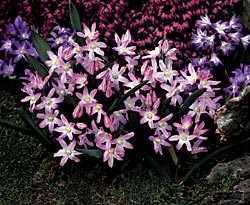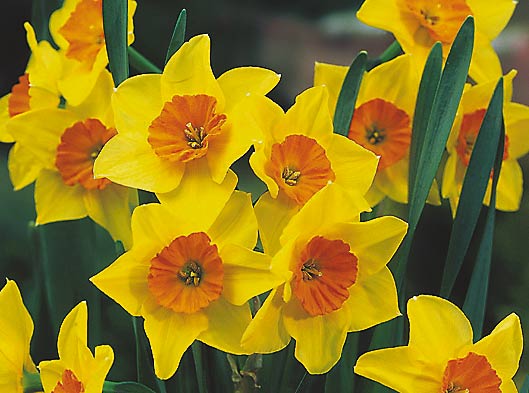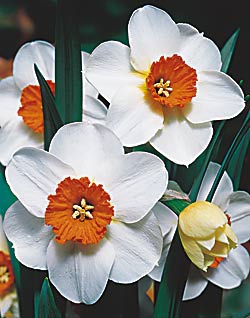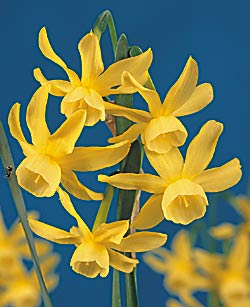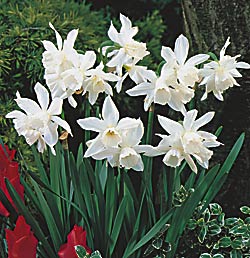 www.johnscheepers.com
www.johnscheepers.com
Muscari botryoides ‘Album’  www.johnscheepers.com
www.johnscheepers.com
Muscari comosumby George Papadelis
In the spring, when tulips, daffodils, and hyacinths are in full bloom, you may be wishing you had planted some the previous fall. Spring-blooming bulbs should be planted in fall when the bulbs are dormant and readily available. Grape hyacinth (Muscari) is one of the most perennial and versatile bulbs available. Its small flowers are usually blue and somewhat resemble clusters of grapes. Planting some this fall will promise to bring masses of effortless flowers for years to come.
Many perennial bulbs last only for a few years. Several of the most common tulips, for example, will only create showy flowers for a year or two. In contrast, grape hyacinths are very long lasting. One mature bulb will create several flower stalks the following spring. By the second year, the bulbs will have begun to create smaller bulblets that are likely to produce even more flowers the following spring. One bulb can create a small colony in just a few years. Dividing colonies into individual bulbs in the late fall will allow each bulblet to mature into a strong bulb capable of producing more and more bulbs. Therefore, just a few grape hyacinths can grow to become masses of spring flowers for the landscape. Plants that naturally grow into large masses are often referred to as good naturalizers. Grape hyacinths are excellent naturalizers and they are deer and rabbit resistant.
Grape hyacinths will grow in almost any type of soil, but good drainage and plenty of organic matter are best. Soil can be improved by incorporating organic amendments such as peat moss, compost, manure, or aged pine bark deep into the existing soil. Remember that the roots develop below the bulb, so it is important that the soil there is well prepared. Be sure to incorporate bulb fertilizers when planting. These contain both nitrogen and phosphorus, which are important for good root development. Grape hyacinths should be planted about 4 or 5 inches deep while many other bulbs such as tulips and daffodils should be planted at least 6 inches (follow the planting depth instructions for individual selections).
 www.dutchgardens.com
www.dutchgardens.com
Muscari latifoliumPlant grape hyacinths in full or partial sun. Shade from deciduous trees is also acceptable since the leaves from these trees will have fallen when the fall foliage of grape hyacinths is photosynthesizing. Yes, fall foliage. Grape hyacinths produce their leaves in fall. The narrow green fall leaves gather energy from the sun and store it in the bulb until spring when the flowers emerge with yet more leaves. The fall leaves can be used to locate your grape hyacinths and they may also be used to “mark” other bulbs that you may have planted with them. Unlike daffodils, tulips, and many other bulbs, the spent plants only leave behind narrow green inconspicuous leaves after blooming. Both tulips and daffodils leave large leaves for several weeks after blooming.
Spring-blooming bulbs are among the earliest spring-blooming perennials. Crocus and snowdrops may bloom as early as March when only hellebores (Christmas rose or Lenten rose) could be in bloom. Grape hyacinths typically bloom late April to May and last for 3 to 4 weeks. Most grow about 6 inches tall and therefore make an excellent border to taller spring bulbs. They may also be combined with pansies, which are best planted in the fall as well. Many spring-blooming perennials such as creeping phlox, ajuga, rockcress (either Arabis or Aubrieta), or candytuft (Iberis) can be planted directly on top of grape hyacinth bulbs. Imagine a brilliant border of pink and white creeping phlox with blue grape hyacinths poking through. As with most bulbs, the more you plant in a mass, the more rewarding the spring display. These are some of the most economical bulbs you can buy, so plant at least 25 at a time.
A while ago, the only Muscari available was the common grape hyacinth. Today, over a dozen different varieties offer exciting variations. The common grape hyacinth (Muscari armeniacum) has lightly scented, royal blue flowers on plants 6 to 8 inches tall. Muscari armeniacum ‘Blue Spike’ only grows 5 to 6 inches tall and has double bright blue flowers. ‘Valerie Finnis’ and ‘Sky Blue’ both produce interesting sky blue flowers. For a showy white, Muscari botryoides ‘Album’ is the most popular, bearing flowers about 6 to 8 inches tall.
 www.johnscheepers.com
www.johnscheepers.com
Muscari macrocarpum ‘Golden Fragrance’The following varieties are quite different from the common grape hyacinth in flower form and/or color. The species Muscari comosum has airy, lavender flowers on wiry stems that somewhat resemble those of the onion family (the genus Allium). For a yellow variety, try Muscari macrocarpum whose bright yellow, almost banana-shaped flowers are also quite fragrant. The species Muscari latifolium produces purple blue bells on the bottom of the flower spike and soft blue bells on the top. It is also one of the tallest varieties at 12 to 15 inches. Muscari plumosum is also up to a foot tall and produces unique, feathery lavender flowers. Some of these might be more difficult to find but are certainly worth the effort.
For those of you who don’t get around to planting bulbs in fall, there is some good news on the horizon. Since most gardeners do their plant shopping in the spring, a few garden centers have realized that there is a market for interesting spring-blooming bulbs at that time. These garden centers are successfully selling blooming tulips, daffodils, alliums, hyacinths, grape hyacinths, crocus, and much more in small pots. They can be stuffed into spring-blooming containers, set on a coffee table, or just planted in flower beds. Regardless of how you use them, I think this is a great way to offer bulbs.
There are two common complaints when it comes to spring-blooming bulbs. Some only bloom for a year or two and some become rabbit food shortly after planting. Grape hyacinths are an excellent example of a bulb that does not have these shortcomings. They will grow almost anywhere there is a little sunlight, they will bloom for years and years, and they require minimal effort once they are planted. Don’t wait until spring to realize that you forgot to plant some of these little gems this fall.
George Papadelis is the owner of Telly’s Greenhouse in Troy, MI.
 www.johnscheepers.com
www.johnscheepers.com
Muscari armeniacum ‘Saffier’
••••••••••••••••••••••••••••••••••••••••••••••••••••••••••••••••••••••••••••••••••••••
At a glance: Grape hyacinth
Botanical name: Muscari (muss-KAR-ee)
Plant type: Bulb
Plant size: 6-15 inches tall and wide
Habit: Clump-forming
Hardiness: Most are zone 4
Flower color: Many shades of blue, from light to deep blue; white
Flower size: 1- to 3-inch long clusters
Bloom period: Late April to May
Light: Sun to part sun
Soil: Well-drained; prefers fertile soil
Uses: Under deciduous trees; front of flower beds and perennial borders
Companion plants: Early-blooming perennials such as creeping phlox, ajuga, rockcress (Arabis or Aubrieta), or candytuft. Also pansies.
Remarks: Leaves emerge in the fall, followed by flowers and more leaves in the spring. Can be planted in the shade of deciduous trees since that area will typically be sunny during bulb growth period. Plant in masses for best impact.




